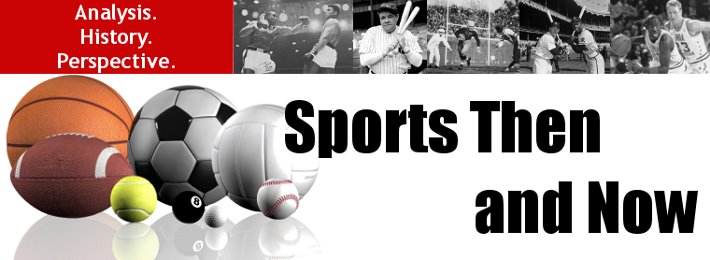
Roger Federer’s recent move past Pete Sampras in the tennis record books and the readiness by many to label Federer the “greatest men’s tennis player of all-time” begs the question of whether true greatness can really be measured through records-held.
Every sport has at least one iconic statistic or record. Whether it is the baseball career home run record, career passing and rushing yardage records in football, most major championships in golf, or most points scored in basketball, there are some numbers that are coveted and cherished.
However, in many cases the players who hold these coveted records are not the same players regularly in the conversation when discussing the “greatest player of all-time” in that particular sport.
Plus, as the nature and style of games change over time. Some statistics become easier, or more difficult, to accomplish, thus making it even more difficult to compare eras.
Let’s first look at basketball. There is little argument that Michael Jordan was the best player ever to play the game.
Yet, he ranks only third in career points scored. Kareem Abdul-Jabbar, who was a great NBA center for 20 years, but whose name rarely comes up in conversations about the best players ever, holds that record.
Instead, Jordan, Oscar Robertson (11th), Jerry West (18th), Wilt Chamberlain (fourth), Larry Bird (29th) and Magic Johnson (66th) are among the players generally regarded as being better than Kareem.
Perhaps no record in sports evokes a greater emotional response than the record for most career home runs in Major League Baseball.
Emotions (both positive and negative) were peaked in 1973 and 1974 when Hank Aaron pursued and eventually passed Babe Ruth for the all-time home run record.
Similarly, when Barry Bonds moved past Aaron in 2007, many baseball purists believed that the alleged use of performance drugs by Bonds was just cause for ignoring his statistical accomplishment.
Yet, while the baseball world has grown to appreciate Aaron and his accomplishments, he has never really been considered to be on the shortlist for the “greatest player of all-time.”
Instead, that conversation usually includes the man he passed for the record, Ruth, as well as one of Aaron’s contemporaries Willie Mays. Others including Ted Williams, Joe DiMaggio and Ty Cobb are often mentioned before you get to Aaron when looking at the best of all-time.
The discrepancy between greatness and holding a record is even more distinguishable when looking at the single-season home run record.
In 1961, Roger Maris hit 61 home runs to pass Babe Ruth for the single season record. It was a mark that stood for 37 years until being passed by three players (Mark McGwire, Sammy Sosa and Barry Bonds) who all have been accused of using performance-enhancing drugs.
For that reason, many consider Maris to still be the legitimate record holder. Yet, Maris will never be considered one of the great players of all-time and, in fact, isn’t even a member of the Baseball Hall of Fame.
Tennis is a sport where situations in different eras make it very difficult to truly be able to use records as the determining factor for deciding who might be the “greatest of all-time.”
Prior to 1968, the four “Grand Slam” tournaments—Australian, French, Wimbledon and U.S. Championships—allowed only amateurs to participate.
Because of that restriction, many great tennis players who chose to earn a living playing professionally were unable to play in the most prestigious tournaments in the sport during some of their prime years.
Australian Rod Laver won six grand slam titles as an amateur between 1960 and 1962. In 1962 he claimed all four championships.
Laver was 24-years old when he turned pro after the 1962 season and did not play in any of the four majors again for five years–until he was nearly 30-years old.
When professionals were allowed to participate in the majors in 1968, Laver won the Wimbledon title. The next year, during which he turned 31, he became the only player in the open era to earn all four grand slam titles in the same calendar year.
He finished his career with 11 grand slam titles.
Federer, who will turn 28 the day before Laver turns 71 in early August, has earned 10 of his 15 grand slam titles since turning 24.
Considering that Laver was ranked as the number one player in the world from 1964 until 1970, it is very likely that had he participated in the 20 major championships held between 1963 and 1967 he would have claimed enough victories to easily put the record for grand slam victories well out of the reach of Federer, Pete Sampras or any of the other players in the open era.
Another factor that makes it deceiving to use major championships as the true judge of tennis greatness is that for many years it was not uncommon for top players to skip one or more of the grand slam tournaments.
Bjorn Borg, who won 11 grand slam tournaments in his career, played in the Australian Open only once. Jimmy Connors, who claimed eight grand slam titles, appeared in the tournament twice, winning the championship in 1974 and reaching the finals in 1975.
The reality is that while we seem to have a great obsession with being able to label someone the “greatest of all-time,” that determination is really only subjective.
We will never be able to accurately judge players from one era with those of another in a manner that accounts for all the variables that change over time.
Whether it is equipment, medical treatment, conditioning, style of play, ease of travel, or significance of events and numbers, circumstances are different from one era to another in all sports.
So, rather than worrying about which player might be the “greatest of all-time,” maybe we should instead enjoy the moment and appreciate the fact that all sports have been blessed with many great stars who all keep us watching.





No comments:
Post a Comment